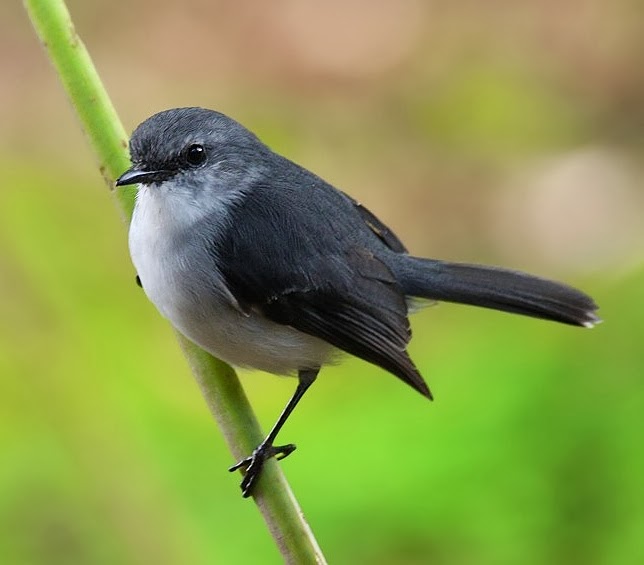Eopsaltria georgiana
 |
| Photo by Eddy Lee (Flickr) |
Common name:
white-breasted robin (en); rouxinol-de-peito-branco (pt); miro à poitrine blanche (fr); petroica pechiblanca (es); weißbrustschnäpper (de)
Taxonomy:
Order Passeriformes
Family Petroicidae
Range:
This species is only found in the south-western tip of Western Australia, from Geraldton to Esperance.
Size:
These birds are 14,5-17 cm long.
Habitat:
The white-breasted robin is mostly found in temperate forests and dry scrublands, also using rivers and streams.
Diet:
They feed on insects and other small invertebrates.
Breeding:
White-breasted robins breed in July-December. They breed cooperatively, with one or several helpers assisting the breeding pair. The nest is a neat cup made of dry grass, bark and spider webs, generally located in a fork in a tree among dense scrubs near a watercourse. The female lays 2 pale olive to green-blue eggs with darker blotches, which are incubated by the female for 16-17 days. The chicks are fed by both parents and helpers and fledge 13-14 days after hatching. Each pair raises 2 broods per season.
Conservation:
IUCN status – LC (Least Concern)
This species has a relatively large breeding range and is reported to be locally quite common. The population is suspected to be stable in the absence of evidence for any declines or substantial threats.







